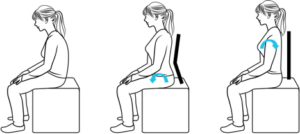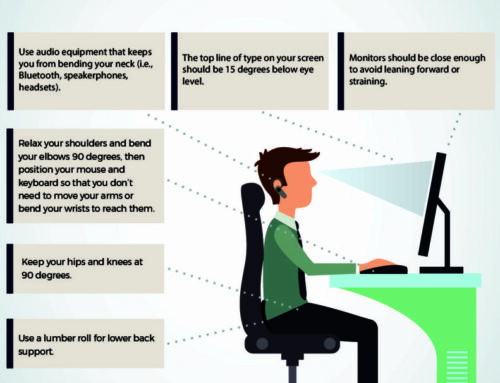Sitting Posture for Extension Biased Low Back Pain
Every day we get asked by patients, “Doctor, How should I sit?” and although it seems like it should be an easy answer, the variables surrounding back pain are enormous and so answering that question can be a real exercise in brainpower. The short answer I often give patients is ‘Don’t sit more than 3 hours per day in a chair” and is of course, impractical.

Back pain and sitting
The truth is we are not designed to sit in chairs or be stationary for long periods of time. But of course, that is not the question or the answer patients are looking for. There are many different kinds of back pain and there is no one correct way to sit however an article by Castanharo (1) provides valuable insight for one common query about proper sitting posture for a certain group of low back pain patients.
Over 85% of back pain classified by the McKenzie system is “extension-biased”, meaning the patient will prefer extension. Extension-biased pain is exacerbated by active or static lumbar flexion- including sitting improperly. The authors found one specific strategy for helping extension-biased LBP patients sit more comfortably.
Participants performed one of 3 possible sitting patterns. “…the first pattern called the ‘‘free’’ pattern, where they were asked to sit slouched and then correct the posture to sit upright. In the ‘‘lumbopelvic’’ pattern, participants sat slouched and then were instructed to sit upright moving the pelvis in an anterior tilt, with an emphasis on hip flexion. The natural lumbar curve resulted from the pelvic motion. In the ‘‘thoracic’’ pattern, participants sat slouched and then were instructed to sit upright focusing on extension through the thoracic lumbar transition region of the spine, by ‘‘lifting the ribcage’’. The authors concluded:
“In summary the “lumbopelvic” pattern strategy using predominantly the movement of anterior pelvic tilt results in smaller joint moments on the lumbar spine and also positions the lumbar spine closest to the neutral posture minimizing passive tissue stress. This may be the strategy of choice for people with low back flexion intolerance.”
Our Treatment
Treatment of back pain includes much more than the procedures performed in-office. We need to attack all variables related to that patient’s problem including; sitting posture, repetitive activities, sleeping position, etc. Our outcomes and duration of treatment are directly related to how many pieces of the complex pain puzzle we can put together for each individual patient.
1. Raquel Castanharo, Marcos Duarte, Stuart McGill Corrective sitting strategies: An examination of muscle activity and spine loading Journal of Electromyography and Kinesiology, Volume 24, Issue 1, February 2014, Pages 114-119


